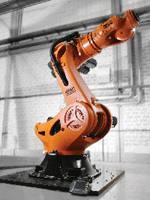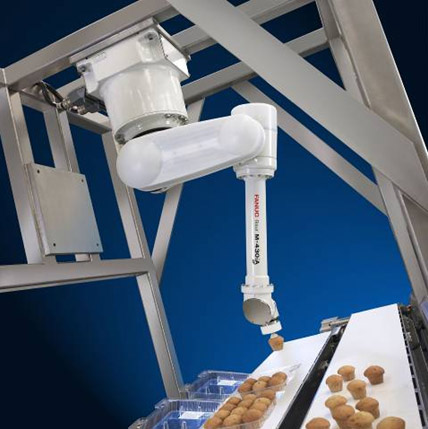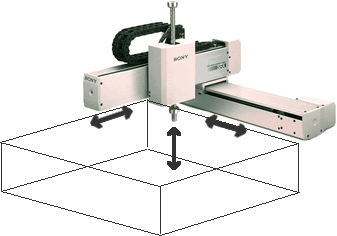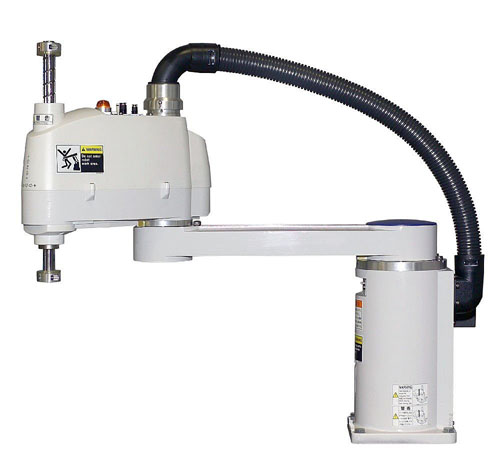Categories:
News
Research
Industrial Automation
Automation Components
Electric Components
Robots
Artifint
New Wave
Motors
Practical
News
Research
Industrial Automation
Automation Components
Electric Components
Robots
Artifint
New Wave
Motors
Practical
Tags:
announcement, website, testing, PLC rack, I/O, Cable, Parallel communication, Serial communication, ASCII, RS232, RS-232 Communication, ProfiBus, Industrial robots, manipulator, Cartesian robot, SCARA Robot, Articulated robot, end-of-arm-tooling, Robotics, Metalcasting, automotive industry, Integrated force sensing, shunt, electric current, Human - Machine Interface, HMI, MMI, Human Factors Engineering, Usability Engineering, User Interface, Systems Engineering, Opton, T-WIN20, T-WIN20 KDM, robot bender, pipes, PROFIBUS, Process Field Bus, communication, automation technology, PROFINET, Industrial Ethernet, Central Association for the Electrical Industry, ZVEI, PROFIBUS FMS, PROFIBUS DP, PROFIBUS International, field-bus, OSI Network model, Field bus Data Link, FDL, RS485, fiber-optic transmission, Manchester Bus Power, MBP, bus topology, Fieldbus Message Specification, Decentralized Periphery, PROFIBUS PA, PROFIdrive, PROFIsafe, The PROFIBUS User Organization, Contactor, Relay, Differences, automation, switch, power contacts, auxiliary contacts, contact springs, electromagnet, coil, armature, Grounding, shielding, EMI, Shields, PWM, RF signal, Magnetic coupling, Pulse-width-modulation, PWM simulation, EMI noise, CE mark, and many more...
Robots in Automation
 The importance of automation and robots in all manufacturing industries is growing. Industrial robots have replaced human beings in a wide variety of industries.
Robots out perform humans in jobs that require precision, speed, endurance and reliability. Robots safely perform dirty and dangerous jobs. Traditional manufacturing
robotic applications include material handling (pick and place), assembling, painting, welding, packaging, palletizing, product inspection and testing. Industrial
robots are used in a diverse range of industries including automotive, electronics, medical, food production, biotech, pharmaceutical and machinery.
The importance of automation and robots in all manufacturing industries is growing. Industrial robots have replaced human beings in a wide variety of industries.
Robots out perform humans in jobs that require precision, speed, endurance and reliability. Robots safely perform dirty and dangerous jobs. Traditional manufacturing
robotic applications include material handling (pick and place), assembling, painting, welding, packaging, palletizing, product inspection and testing. Industrial
robots are used in a diverse range of industries including automotive, electronics, medical, food production, biotech, pharmaceutical and machinery.The ISO definition of a manipulating industrial robot is "an automatically controlled, reprogrammable, multipurpose manipulator". According to the definition it can be fixed in place or mobile for use in industrial automation applications. These industrial robots are programmable in three or more axes. They are multi-functional pieces of equipment that can be custom-built and programmed to perform a variety of operations.

Food Processing with a FANUC Robotics M-430iA Robot
The major advantages of industrial robots is that they can be programmed to suit industry specific requirements and can work continuously for years, consistently meeting high manufacturing quality standards. The economic life span of an industrial robot is approximately 12-16 years. Due to their persistent accuracy industrial robots have become an indispensable part of manufacturing. Industrial robots are classified into different categories based on their mechanical structure. The major categories of industrial robots are:

Gantry (Cartesian) Robot: They are stationary robots having three elements of motion. They work from an overhead grid with a rectangular work envelope. They are mainly used to perform 'pick and place' actions. Gantry robots have all their axes above the work making them also ideal for dispensing applications.

SCARA Robots: (Selectively Compliant Articulated Robot Arm) These robots have 4 axes of motion. They move within an x-y-z coordinated circular work envelope. They are used for factory automation requiring pick and place work, application and assembly operations and handling machine tools.

Articulated robots: An articulated robot has rotary joints. It can have from two to ten or more interactive joints. Articulated robots are well suited to welding, painting and assembly.
Basic industrial robot designs can be customized with the addition of different peripherals. End effectors, optical systems, and motion controllers are essential add-ons. End effectors are the end-of-arm-tooling (EOAT) attached to robotic arms. Grippers or wrenches that are used to move or assemble parts are examples of end effectors. End effectors are designed and used to sense and interact with the external environment. The end effectorsRobots in Automation design depends on the application requirements of the specific industry. Machine Vision systems are robotic optical systems. They are built-on digital input/output devices and computer networks used to control other manufacturing equipment such as robotic arms. Machine vision is used for the inspection of manufactured goods such as semiconductor chips. Motion controllers are used to move robots and position stages smoothly and accurately with sub-micron repeatability. Industrial robots fill the need for greater precision, reliability, flexibility and production output in the increasingly competitive and complex manufacturing industry environment. More information here.
This post belongs to category: